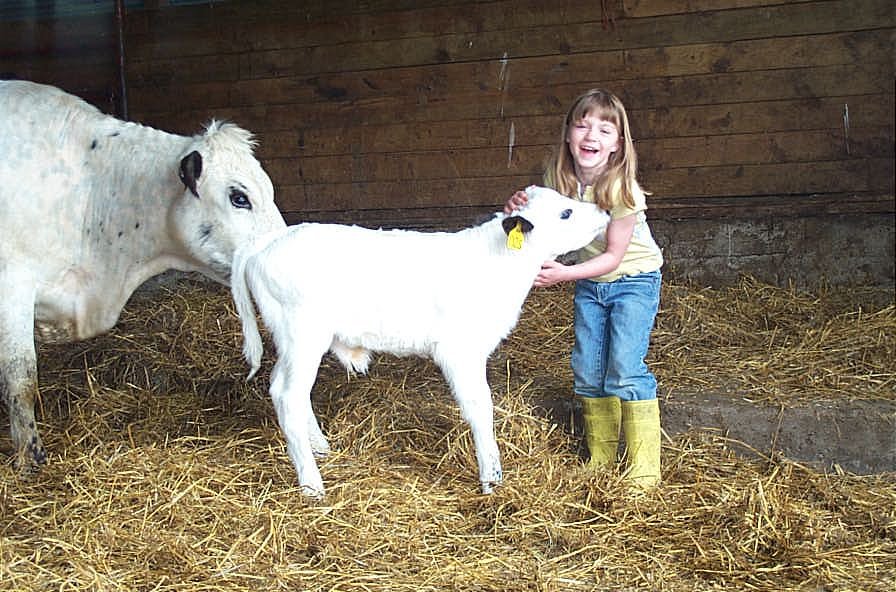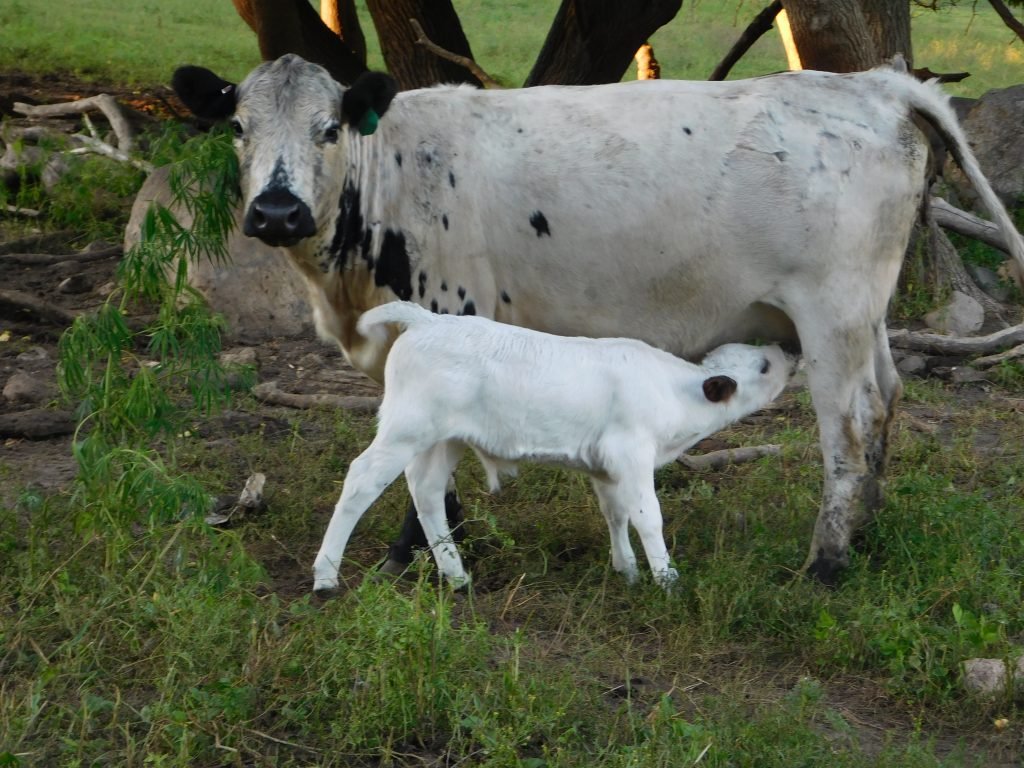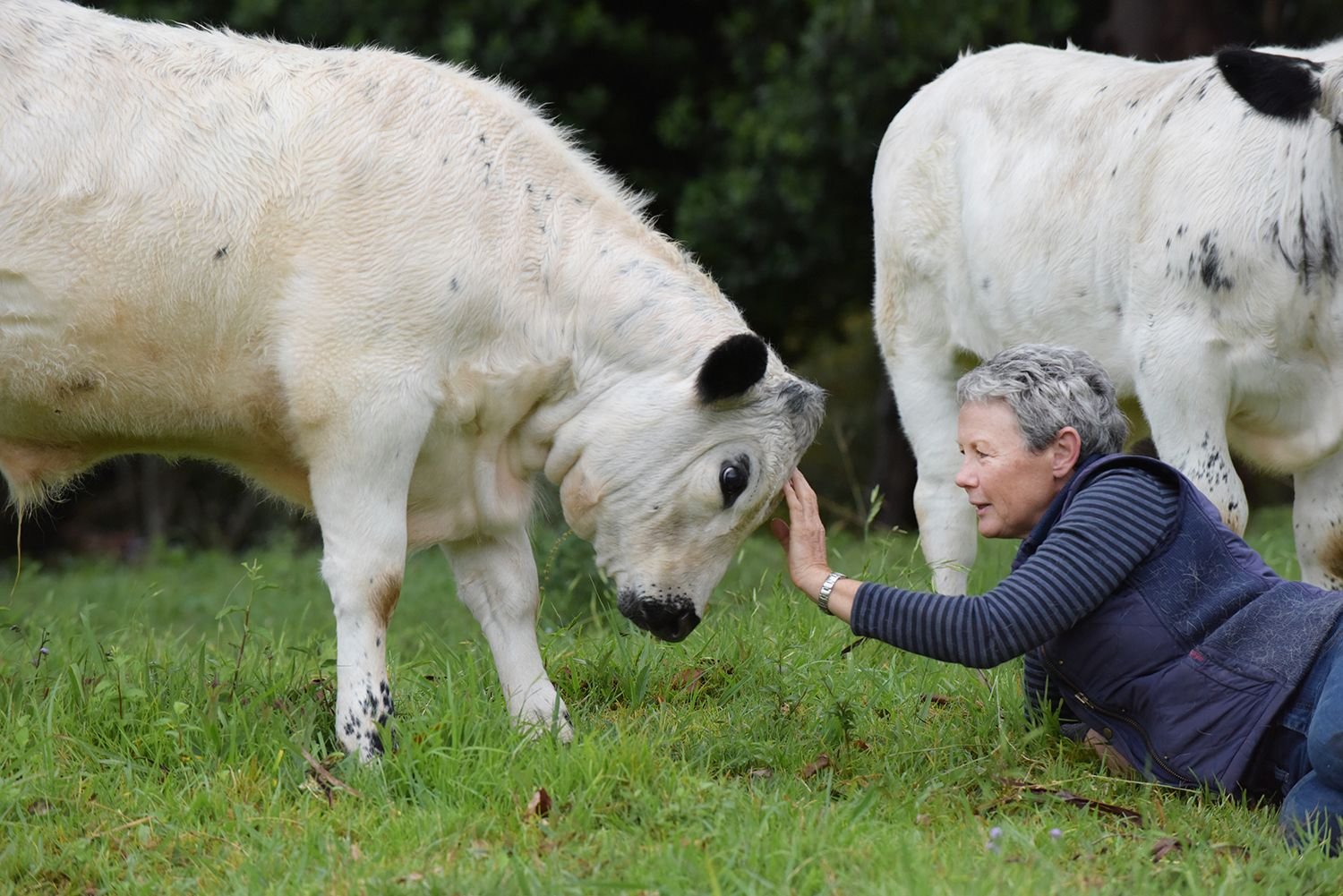Table of Contents
Introduction
The British White cattle are one of the oldest breeds in Britain. They have earned a reputation for their high-quality beef and milk. They are perfect for various climates because of their hardy nature. Their adaptability and less care needs make them a valuable choice for farmers.
This article will show how the British White cattle’s traits and benefits make them the ultimate breed for high-quality meat and low-maintenance care.
History of White British Cattle
They originated at Whalley Abbey in Lancashire, but the original herd was spread out in 1697. This breed likely started by crossing a hornless bull from Cleveland, England, with wild horned white cattle near Whalley. The breed then spread to East Anglia, which became its main area for many years. This breed is also found in Australia and America.

Main Characteristics
Size (Weight and Height)
British White cattle is a medium-sized breed, weighing between 1,000 to 1,500 pounds. Bulls are larger, weighing between 1,800 to 2,300 pounds. They are naturally hornless, although some may have small, horn-like growths called “scurs.”
Female White British cattle are Frame 5, meaning their mature height over the hip is about 135 cm. Bulls are Frame 6, with a height of about 145 cm. The breed is known for its strong milking ability, highly valued in English dairy herds for many years.
A Healthy Breed
The key advantage of the British White breed is its strong resistance to diseases like tuberculosis and viral pneumonia. It also shows no clear tendencies toward arthritis in the UK and has a low rate of calving difficulties.
Good Temperament
British White is known for its gentle temperament. They are easy to handle in both the field and close spaces, making them excellent for breeders. These traits are especially valued when preparing them for shows, as they respond well to feeding and handling in stall conditions.
Milk Production
The best answer to the question “British White cattle milk production” is that they are excellent milk producers with strong mothering abilities, which greatly benefit farmers. A calf’s growth and weight gain depend on the mother’s capacity to produce plenty of rich milk.
British White cows provide ample, rich milk for their calves, ensuring healthy growth. Even first-time heifers produce richer milk, showing their strong maternal instincts and making them ideal for breeding.
They produce a steady milk flow with good butterfat content. Their udders are well-shaped with minimal fatty tissue and medium-sized teats that maintain their form. It reduces the chance of unsuckled quarters and helps prevent related issues.
Quality Beef
The American British White cattle produce lean and tasty meat with a thin layer of fat and light marbling, making it best for steaks and roasts. The meat has a lower fat percentage, making it a healthier option. In contrast, Jersey cows have a higher fat content in their milk, around 4.5%.
Naturally Polled
English White cattle carry a gene that makes their skin and certain spots black. This fact is useful when breeding different types of cattle. The dark coloring helps protect them from problems like eye cancer, sunburn on their teats, and damage from snow. Also, these cattle don’t have issues reacting badly to sunlight.
Heat Tolerance
British White is known for its ability to lie in the sun while other cattle seek shade. So, they can handle above-average heat, making them well-suited for various climate conditions.
Traits And Statics
- Excellent Milking Ability
- Quality (Beef Meat) – Lean and Tender
- Fertility and Easy Calving
- Growth and Hardiness
- Efficient and Trouble-free
- Perfect for Crossbreeding

Advantages and Disadvantages
Advantages
It has many benefits out of which some important ones are listed below:
- Adaptability: They are hardy and have strong temperaments. So they can adapt to different climates and environments.
- Longevity: They have good health due to a strong resistance to diseases. This ability increases their lifespan.
- Quality Meat: They are known for producing high-quality beef with a thin rhine and light marbling, making it ideal for steaks and roasts.
- Low Maintenance: Both bulls and cows are very gentle and easy to handle. They require less intensive care than other breeds due to their hardy nature and strong temperament.
Disadvantages
The disadvantages of the British cow are as follows:
- Slower Growth Rate: They grow slower than some other breeds, which is a big disadvantage in commercial beef production.
- Smaller Market Demand: English White cattle are in less demand compared to other beef breeds. They are special because of their looks and good meat, but they’re not as popular or widely available as other breeds. This thing makes their market smaller and more specialized.
Mini British White cattle
Mini British White cattle are miniature versions of the standard British White breed. They are known for their distinctive white furs with black or red spots. You can handle them easily because of their small sizes, making them the best choice for livestock breeders and homesteads.
Difference between British White Cattle and White Park Cattle
We can easily say that the British White and White Park are essentially the same breed, with no major differences between the two. But, they are registered with two different associations. The British White is registered with the British Cattle Association of America, while the White Park is registered with the American British White Park Association.
FAQs
1. Are British White cattle rare?
Yes, The White cattle are deemed rare and are on the “At Risk” list of the Rare Breed Trust in Australia and the Rare Breeds Survival Trust in the UK.
2. What are British white cattle used for?
They are used for quality beef and high milk production. Their adaptability and less care needs make them a valuable choice for farmers.
3. Can you milk British White?
The British White breed is recognized for its gentleness, toughness, and unusual health. It’s great at producing milk and is equally praised for the quality of its beef, which has an excellent texture.
4. Are White cattle naturally horned?
No, the White Cattle are considered a polled breed, which means they are born without horns. Naturally, hornless cows.
5. What are the disadvantages of British White cattle?
The main disadvantages of White British cattle are:
- Slower growth rate
- Smaller market demand
6. Which cow is white with a black nose and ears?
The American White Park is a big white breed with either black or red points on their ears, nose, and eyes.

